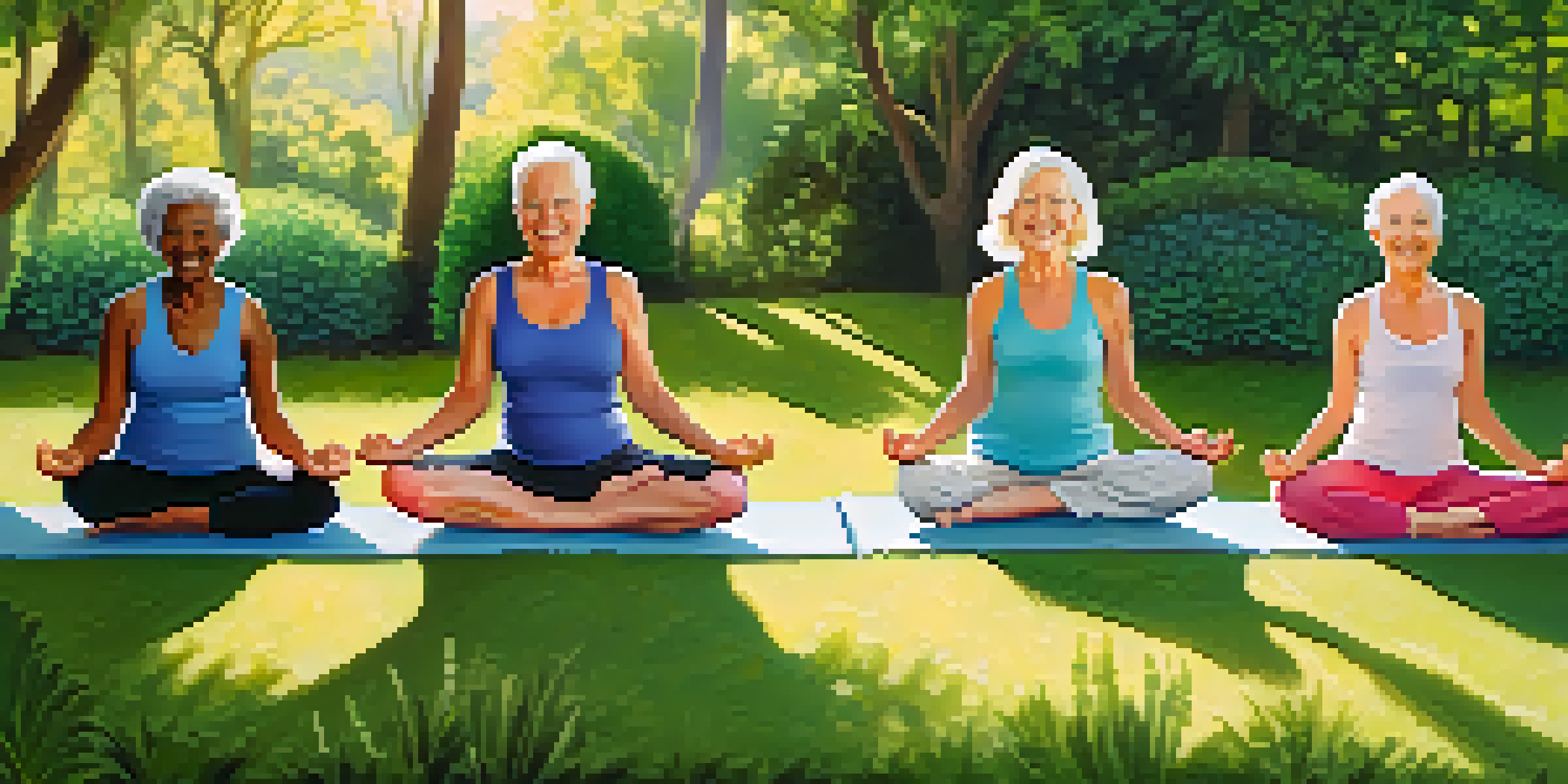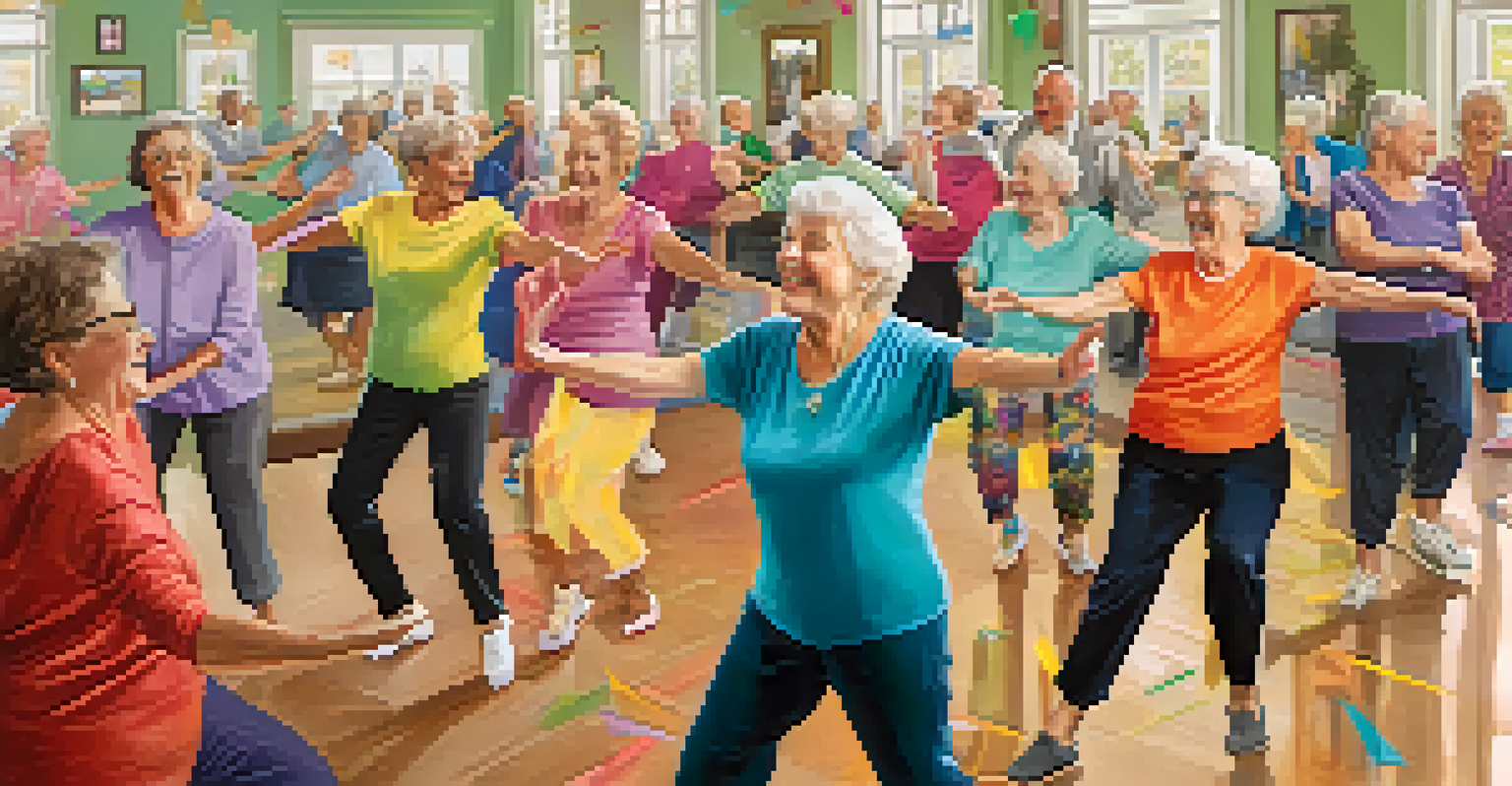How Regular Exercise Enhances Quality of Life in Seniors

Understanding the Importance of Exercise for Seniors
As we age, staying active becomes crucial for maintaining good health. Regular exercise helps seniors combat the physical decline that often accompanies aging. It’s not just about lifting weights or running; even simple activities like walking can make a huge difference.
Movement is a medicine for creating change in a person's physical, emotional, and mental states.
Exercise plays a key role in reducing the risk of chronic diseases, which are more prevalent in older adults. Conditions like heart disease, diabetes, and arthritis can often be managed or even prevented through consistent physical activity. This means that getting moving can lead to a longer, healthier life.
Moreover, engaging in physical activity fosters a sense of community. Many seniors find joy in joining exercise classes or walking groups, which can lead to meaningful social interactions. This combination of physical and social benefits creates a robust foundation for improved quality of life.
Physical Benefits of Regular Exercise for Seniors
One of the most notable benefits of regular exercise is enhanced physical strength and flexibility. As seniors engage in activities like stretching or strength training, they can maintain or even improve their muscle mass and flexibility. This is essential for reducing the risk of falls, a common concern for older adults.

Additionally, exercise boosts cardiovascular health. Engaging in aerobic activities, such as swimming or cycling, can strengthen the heart and improve circulation. This leads to better oxygenation of the body, which is vital for overall health and vitality.
Exercise Boosts Senior Health
Regular physical activity helps seniors reduce the risk of chronic diseases and maintain overall health.
Finally, regular exercise helps in managing weight. Many seniors struggle with fluctuating weight, and maintaining a healthy weight can alleviate stress on the joints and reduce the risk of various health complications. Exercise, paired with a balanced diet, can help seniors achieve and maintain a healthy weight, promoting overall well-being.
Mental Well-Being and Exercise Connection
Exercise isn't just beneficial for the body; it significantly impacts mental health as well. Physical activity stimulates the release of endorphins, often referred to as 'feel-good' hormones. This natural boost can help alleviate feelings of depression and anxiety that some seniors may experience.
The greatest wealth is health.
Moreover, staying active can improve cognitive function. Research has shown that regular exercise can enhance memory and reduce the risk of cognitive decline and diseases like Alzheimer’s. Activities that challenge the brain, like dancing or even group sports, can be particularly beneficial.
Engaging in exercise also provides a sense of accomplishment. Setting and achieving fitness goals, no matter how small, can boost self-esteem and confidence. This positive reinforcement encourages seniors to stay active and engaged in their daily lives.
Social Engagement Through Group Activities
Joining exercise classes or walking groups can be a fantastic way for seniors to meet new people. Social interactions foster a sense of belonging, which is crucial for emotional well-being. Many seniors find that participating in group exercises makes the activity more enjoyable and motivating.
These social connections can help combat loneliness, a significant issue for many older adults. By forming friendships through shared interests in fitness, seniors can create a support system that enhances their overall quality of life. It's all about finding joy in movement together.
Social Benefits of Group Activities
Participating in group exercise fosters social connections that enhance emotional well-being and combat loneliness.
Group activities also provide accountability. When seniors commit to participating in a class or group, they are more likely to stay consistent with their exercise routines. This shared commitment helps everyone stay on track and encourages a more active lifestyle.
Finding the Right Exercise Routine for Seniors
It's essential for seniors to find an exercise routine that suits their interests and abilities. Whether it’s yoga, swimming, or gentle aerobics, the key is to choose activities that are enjoyable. This makes it easier to stick with a routine over the long term.
Consulting with a healthcare provider or fitness professional can help seniors determine what types of exercise are safe and appropriate for their individual health conditions. They can provide tailored advice that considers any limitations or pre-existing conditions.
Starting slow and gradually increasing intensity is important. Seniors should listen to their bodies and make adjustments as needed. The goal is to find a balance that promotes health without causing undue strain or injury.
Adapting Exercise for Specific Health Conditions
Many seniors live with chronic conditions that can influence their exercise routines. It’s crucial to adapt activities to accommodate these conditions, whether it’s arthritis, osteoporosis, or heart disease. Tailoring exercises ensures safety while still reaping the benefits of physical activity.
Low-impact exercises are often recommended for seniors dealing with joint pain. Activities like water aerobics or tai chi can provide an effective workout without putting undue stress on the body. These adaptations make it possible for seniors to stay active regardless of health concerns.
Tailored Routines for Safety
Adapting exercise routines to accommodate specific health conditions ensures seniors can stay active safely.
Additionally, working with a physical therapist can be beneficial. They can develop personalized exercise plans that address specific health needs while promoting strength and mobility. This professional guidance can empower seniors to exercise safely and effectively.
Conclusion: Embracing an Active Lifestyle in Later Years
In conclusion, regular exercise offers a multitude of benefits that enhance the quality of life for seniors. From physical strength and mental clarity to social engagement, the advantages are undeniable. Embracing an active lifestyle can lead to a happier, healthier aging experience.
It’s never too late to start incorporating exercise into daily routines. Whether through simple home workouts, joining a local class, or participating in community events, the options are plentiful. The important thing is to take that first step towards a more active life.

Ultimately, the journey of staying active is a personal one. By finding enjoyable activities and surrounding themselves with supportive communities, seniors can significantly improve their overall well-being and enjoy their golden years to the fullest.